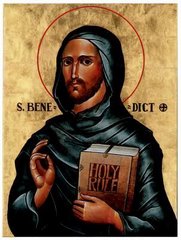Ang Pag-iisang Dibdib bilang Pagsasabuhay kay Kristo
Hinihimok ni San Pablo sa kanyang sulat sa mga taga-Efeso ang mga mag-asawa na mahalin ang kanilang asawa gaya ng pagmamahal ni Kristo sa kanyang Simbahan. Isa sa mga taguri ng Simbahan ang pagiging esposa o asawa ni Hesukristo at walang ibang sakramento ang sumasagisag ng kasal ni Kristo at ng Simbahan kungdi ang sakramento ng pag-iisang dibdib. Walang ibang sakramento na kung saan ang dalawang Kristiyano ay itinatalaga ang kanilang sarili na ialay ang kanilang kabuoan alang-alang sa pag-ibig sa isa’t isa. Ito ang diwa ng kasal. Ito ang ginawa ni Kristo sa krus para sa kanyang minamahal na Simbahan. Sa kasal, ang lalaki at babae ay nagtitipan at nangangakong gagawin ang parehong pag-aalay na ito hanggang sa huling sandali ng kanilang buhay.
Sa sakramento ng kasal, ang gumaganap sa sakramento ay ang mga ikakasal at hindi ang pari. Sa pagdiriwang ng kasal, ang mga ikakasal ay hindi lang mga taong simpleng gumagawa ng isang kasunduan o kontrata. Tatayo sila sa harap ng Diyos at sa harap ng Sambayanang Kristiyano bilang mga binyagang Kristiyano na kinumpil upang maging kawangis ni Kristo at magtitipang gagawin ang ginawa ni Kristo na pag-aalay ng sarili para sa isa’t isa, magtitipang maging isa sa hirap at ginhawa, sa dusa at ligaya. Ang Sambayanang Kristiyano, sa katauhan ng mga ninong at ninang, mga bisita at pari, ay tatanggapin ang mga nagtitipan, mananalangin para sa katatagan at katapatan ng mga kinakasal, at gagabay at tutulong sa mga ito sa buhay mag-asawa.
Nakapaloob ang kasal sa Misa dahil ang Misa ang rurok at bukal ng mabubuting gawa ng Kristiyano. Sa Misa inaalala at ginaganap natin ang pag-aalay ni Kristo ng kanyang sarili para sa kaligtasan ng lahat. Sa pakiki-isa natin kay Kristo sa Eukaristiya, hinihimok tayong ialay din ang ating sarili para sa ating kapwa at dahil sa ating tinatanggap na Katawan at Dugo ni Kristo sa Misa, pinatatatag tayo upang magawa natin ang hamong ito. Ganitong pag-aalay ang hinihingi sa buhay mag-asawa at ang Eukaristiya ang magpapaalala at magbibigay-lakas para dito.
Ang Kasal ay isang sakramento, isang pakikipagtagpo sa Diyos kung kaya’t ang buhay mag-asawa ay pakikipagtagpo sa Diyos, pagsasabuhay sa Diyos at pakikiisa sa buhay ng Diyos. Sa pag-ibig ng mag-asawa at sa kanilang pag-aalay ng kanilang sarili sa isa’t isa, sinasalamin nila ang katotohanang sila ay mga nilikhang wangis ng Diyos na pag-ibig at mga kaisa ni Hesukristo.
Ang pagdiriwang ng pag-iisang dibdib na ito ay ang itinakdang pagdiriwang ng Pulong ng mga Obispo ng Pilipinas. Pinili ang mga pagbasa ayon sa tema ng pag-ibig at pagsasabuhay ng pag-ibig ng Diyos sa buhay mag-asawa. Sa halip na sagutan, ipahahayag ng ikakasal ang kanilang tipan nang buo. Dapat makibahagi ng buo, aktibo at may pagmamalay ang lahat ng natitipon para sa kasal na ito.
Nawa’y maging magandang simula ang pagdiriwang na ito para sa isang mahaba, malalim at maka-Diyos na pagsasama bilang mag-asawa. Kaisa ng Sambayanang Kristiyano, nananalangin ako na kayo ay pagpalain ng Diyos ng pag-ibig.
Kay Kristo,
Jeffrey Velasco
Tagapag-ugnay sa Pagsamba
